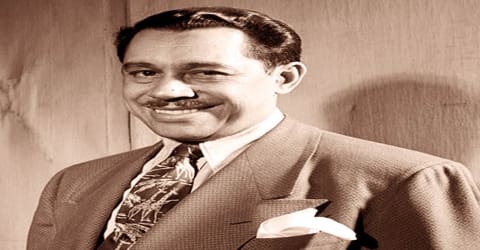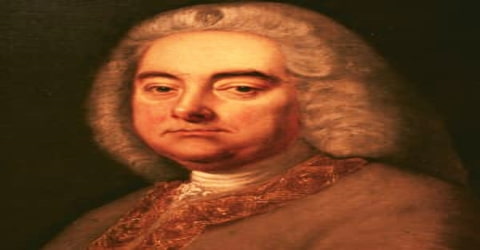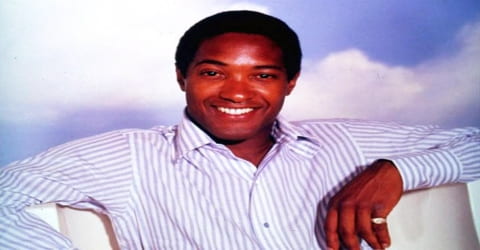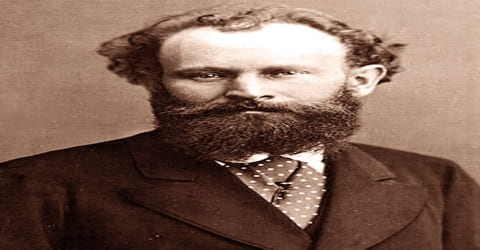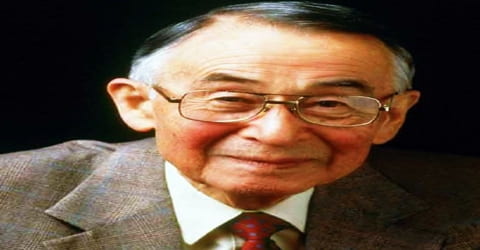Biography of Cab Calloway
Cab Calloway – American jazz singer, dancer, and bandleader.
Name: Cabell Calloway III
Date of Birth: December 25, 1907
Place of Birth: Rochester, New York, United States
Date of Death: November 18, 1994 (aged 86)
Place of Death: Hockessin, Delaware, United States
Occupation: Bandleader, Singer-songwriter, Dancer
Father: Cabell Calloway II
Mother: Martha Eulalia Reed
Spouse/Ex: Wenonah “Betty” Conacher (m. 1928–1948), Zulme MacNeal (m. 1949–1994)
Early Life
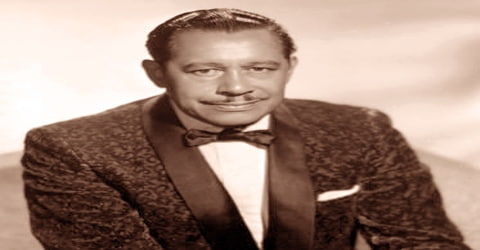
An American bandleader, singer, and all-around entertainer known for his exuberant performing style and for leading one of the most highly regarded big bands of the swing era, Cab Calloway was born December 25, 1907, Rochester, New York, U.S. He was strongly associated with the Cotton Club in Harlem, New York City, where he was a regular performer.
Calloway was a master of energetic scat singing and led one of the United States’ most popular big bands from the start of the 1930s to the late 1940s. Calloway’s band featured performers including trumpeters Dizzy Gillespie and Adolphus “Doc” Cheatham, saxophonists Ben Webster and Leon “Chu” Berry, New Orleans guitarist Danny Barker, and bassist Milt Hinton.
During the heyday of the Harlem Style in the 1920s and 30s, Calloway reigned supreme alongside performers such as Louie Armstrong and Duke Ellington. While growing up in Maryland he was expected to follow in his father’s footsteps and study law, he instead followed his passion for music. After moving to Chicago, Cab found work as a singer and enjoyed some fame for a few years. An unsuccessful gig in New York City led him to dissolve the existing band and form another. The change paved the way for success in New York and ultimately a long-standing engagement at the Cotton Club, where Calloway evolved his flamboyant style and established himself as a household name. He continued to perform at clubs and popularized jitterbug music, and the “scat” singing style. Several of his songs became hits, with the unforgettable “Minnie the Moocher” among his crowning accomplishments. He performed on the stage and films for many years. During his career, he enjoyed the adoration of a diverse audience which realized that his brand of energy, charisma, and talent comes along only once in a while.
Childhood, Family and Educational Life
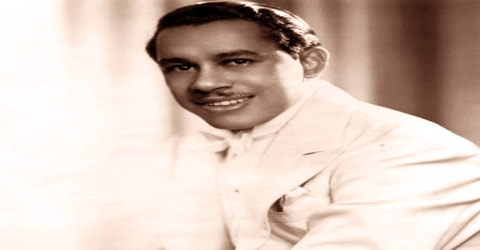
Cab Calloway, by name of Cabell Calloway III, was born on December 25, 1907, to Martha Reed and Cabell Calloway, Jr. in Rochester, New York. His family relocated to Baltimore, Maryland, where his mother worked as a teacher and his father as a lawyer. The family moved to Baltimore, Maryland, when Cab was 11.
Calloway grew up as an adolescent in a middle-class household in West Baltimore’s Sugar Hill area, considered the political, cultural and business hub of black society. Early on, his parents recognized their son’s musical talent, and he began private voice lessons in 1922. He continued to study music and voice throughout his formal schooling. Despite his parents’ and teachers’ disapproval of jazz, Calloway began frequenting and performing in many of Baltimore’s nightclubs. As a result, he came into contact with many of the local jazz luminaries of the time. He counted among his early mentor’s drummer Chick Webb and pianist Johnny Jones.
In 1925, Calloway played drums and sang with a jazz combo at several clubs in Baltimore. He also performed in several revues and musicals at his high school and local theater. He excelled at sports in his high school and played basketball with the Negro Professional Basketball League on the “Baltimore Athenians” in 1926. His elder sister, Blanche Calloway, lived in Chicago and was enjoying great success as a singer and bandleader. She helped her little brother land his first job as a performer after he graduated from Frederick Douglass High School in 1927. He often credited her for inspiring him to start a career in show business.
Personal Life
Cab Calloway fathered a child with Zelma Proctor in 1927. He married Betty Conacher in 1928 but they remained childless. He met Zulme MacNeal and fathered three children with her in 1945, 1949, and 1952. The children were Chris, Lael, and Cabella respectively.
Calloway was a larger than life figure who led one of the greatest bands of the swing era. He entertained audiences and broke through barriers in a career that has been immortalized in popular culture.
Career and Works
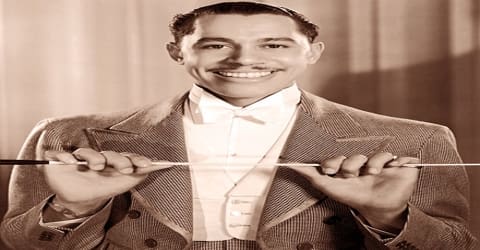
Cab Calloway began directing his own bands in 1928 and in the following year went to New York City. There he appeared in an all-black musical, Fats Waller’s Connie’s Hot Chocolates, in which he sang the Waller classic “Ain’t Misbehavin’.” In 1929, when Armstrong and Dickerson left for New York City, he took over as bandleader of the “The Alabamians.” He quit the law course he was taking at Crane College to pursue his music career. He toured with his band and ended the tour at the “Savoy Ballroom” in Harlem. He was so popular with the crowds, that he accepted an offer to become bandleader for “The Missourians.”
In 1930, Calloway agreed to be the house band at the “Cotton Club” while Duke Ellington was on tour. His success led him to remain and lead a co-house band. NBC taped a twice-weekly radio show at the Cotton Club and it propelled him to further fame. He and Ellington had effectively broken through the unspoken color barrier of broadcasts.
In 1931 Calloway was engaged as a bandleader at the Cotton Club; his orchestra, along with that of Duke Ellington’s, became one of the two house bands most associated with the legendary Harlem nightspot. In the same year, Calloway first recorded his most famous composition, “Minnie the Moocher,” a song that showcased his ability at scat singing. Other Calloway hits from the 1930s include “Kickin’ the Gong Around,” “Reefer Man,” “The Lady with the Fan,” “Long About Midnight,” “The Man from Harlem,” and “Minnie the Moocher’s Wedding Day.”
He also performed in the 1930s in a series of short films for Paramount. Calloway’s and Ellington’s groups were featured on film more than any other jazz orchestras of the era. In these films, Calloway can be seen performing a gliding backstep dance move, which some observers have described as the precursor to Michael Jackson’s “moonwalk”. Calloway said 50 years later, “it was called The Buzz back then.” The 1933 film International House featured Calloway performing his classic song, “Reefer Man”, a tune about a man who favors marijuana cigarettes.

Calloway recorded songs for a series of Betty Boop animated shorts between1932 to 1933. He continued to perform and record with his band Cab Calloway and his Orchestra. He appeared in his first full-length movie, “The Singing Kid” in 1936 alongside Al Jolson. The movie served as a small but significant effort at more equal portrayals of African-Americans. According to music historian Arthur Knight, the film aimed in part “to both erase and celebrate boundaries and differences, including most emphatically the color line.” He also notes that “when Calloway begins singing in his characteristic style in which the words are tools for exploring rhythm and stretching melody it becomes clear that American culture is changing around Jolson and with (and through) Calloway”. The next seven years he continued to tour and record extensively with various labels.
Calloway’s was one of the most popular American jazz bands of the 1930s, recording prolifically for Brunswick and the ARC dime store labels (Banner, Cameo, Conqueror, Perfect, Melotone, Banner, Oriole, etc.) from 1930 to 1932 when he signed with RCA Victor for a year. He was back on Brunswick in late 1934 through 1936, when he signed with manager Irving Mills’s short-lived Variety in 1937. He stayed with Mills when the label collapsed during the Great Depression. Their sessions were continued on Vocalion through 1939, and then OKeh Records through 1942. After an AFM recording ban due to the 1942-44 musicians’ strike ended, Calloway continued to record prolifically. Calloway’s vocal style is a blend of hot scat singing and improvisation, coupled with a very traditional vaudeville-like singing style. Many of his ballads are devoid of tone-bending jazz styling.
Calloway was an energetic and humorous entertainer whose performance trademarks included eccentric dancing and wildly flinging his mop of hair; his standard accouterments included a white tuxedo and an oversized baton. He was a talented vocalist with an enormous range and was regarded as “the most unusual and broadly gifted male singer of the ’30s” by jazz scholar Gunther Schuller. Although his band rose to fame largely on the strength of his personal appeal, some critics felt that Calloway’s antics drew focus away from one of the best assemblages of musicians in jazz. Calloway led a tight, professional unit during the early 1930s, but many regards his band of 1937–42 to be his best. Featured sidemen during those years included legendary jazz players such as pianist Bennie Payne, saxophonists Chu Berry and Ike Quebec, trombonist-vibraphonist Tyree Glenn, drummer Cozy Cole, and trumpeters Dizzy Gillespie, Doc Cheatham, Jonah Jones, and Shad Collins. The decline in popularity of big bands forced Calloway to disband his orchestra in 1948, and he continued for several years with a sextet.
In 1941 Calloway fired Dizzy Gillespie from his orchestra after an onstage fracas erupted when Calloway was hit with spitballs. He wrongly accused Gillespie, who stabbed Calloway in the leg with a small knife. His 1942 recording of “Blues in the Night” was a big hit. In 1943 Calloway appeared in the high-profile 20th Century Fox musical film Stormy Weather. Stormy Weather was one of the first films that featured an all-star black cast.
In 1944, Calloway published a book called “The New Cab Calloway’s Hepsters Dictionary: The Language of Jive,” in which he translated jive language for fans.

Calloway and his band starred in Hi-De-Ho (1947), an all-black full-length film directed by Josh Binney. Caricatures of Calloway appeared in the Porky Pig cartoons Porky at the Crocadero and Swooner Crooner. The band also formed its own barnstorming baseball and basketball teams during the 1930s, starring Calloway, Milt Hinton, Chu Berry, Benny Payne, and Dizzy Gillespie.
Calloway also had a successful side career as an actor. He appeared in several motion pictures, including The Big Broadcast (1932), Stormy Weather (1943), Sensations of 1945 (1944), and The Cincinnati Kid (1965). George Gershwin had conceived the role of “Sportin’ Life” in his 1935 jazz opera Porgy and Bess for Calloway; the entertainer finally got his chance at the part during a heralded world tour of the show in 1952–54.
In the late 1940s, Calloway wrote a regular humorous pseudo-gossip column called “Coastin’ With Cab” for Song Hits Magazine. It was a collection of celebrity snippets such as the following in the May 1946 issue: “Benny Goodman was dining at Ciro’s steak house in New York when a very homely girl entered. ‘If her face is her fortune,’ Benny quipped, ‘she’d be tax-free’.” In the late 1940s, however, Cab Calloway’s bad financial decisions, as well as his gambling, caused his band to break up.
Calloway returned to stage in 1952 in a production of Porgy and Bess. His well-received role as “Sportin’ Life” launched him back into performances in various productions. Another notable role was “Yeller” in The Cincinnati Kid (1965), with Steve McQueen, Ann-Margret, and Edward G. Robinson.
In the 1960s, Calloway appeared on Broadway and on tour in Hello, Dolly!, portraying the role of Horace Vandergelder opposite Pearl Bailey as Dolly Levi, and he again starred on Broadway in the 1970s in the hit musical Bubbling Brown Sugar. His best-known acting performance was also his last, as a jive-talking music promoter in director John Landis’s comedy The Blues Brothers (1980). The film featured Calloway singing “Minnie the Moocher” every bit as energetically and eccentrically as he had performed it in 1931.
Calloway appeared on The Ed Sullivan Show on March 19, 1967, with his daughter Chris Calloway. In 1967, Calloway co-starred opposite Pearl Bailey as Horace Vandergelder in an all-black cast change of Hello, Dolly! on Broadway during its original run. Chris Calloway also joined the cast as Minnie Fay. The new cast revived the flagging business for the show and RCA Victor released a new cast recording, rare for the time. In 1973–74, Calloway was featured in an unsuccessful Broadway revival of The Pajama Game alongside Hal Linden and Barbara McNair. His autobiography, Of Minnie the Moocher and Me (Crowell), was published in 1976. It included his complete Hepsters Dictionary as an appendix.
In 1980, Calloway performed “Minnie the Moocher” in the “The Blues Brothers” movie. This performance was a re-launch for him and he worked in films and stage for the next decade. He also sang “The Jumpin’ Jive” and “Hi De Ho Man” with the Two-Headed Monster on the children’s TV series Sesame Street. This also was the year the cult movie Forbidden Zone was released, which included rearrangements of, and homages to, Calloway songs written by Calloway fan Danny Elfman, performed by Elfman and his band, The Mystic Knights of the Oingo Boingo.
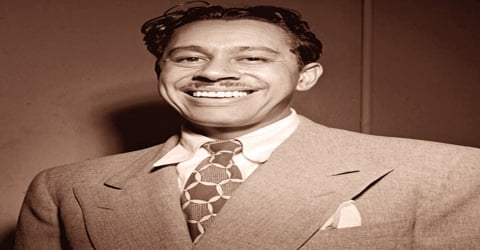
In 1985, Cab Calloway and his Orchestra appeared at The Ritz London Hotel where he was filmed for a 60-minute BBC TV show called The Cotton Club comes to the Ritz; Adelaide Hall, Doc Cheatham, Max Roach, and the Nicholas Brothers also appeared on the bill. In 1986, Calloway appeared at World Wrestling Entertainment (WWE)’s WrestleMania 2 as a guest judge for a boxing match between Rowdy Roddy Piper and Mr. T; it took place at the Nassau Coliseum. Also in 1986, Calloway headlined to great success a gala ball for 4,000 celebrating the grand opening of the Rosewood Hotel Co.’s Hotel Crescent Court in Dallas, Texas. A performance with the Cincinnati Pops Orchestra directed by Erich Kunzel in August 1988 was recorded on video and features a classic presentation of “Minnie the Moocher,” 57 years after the first recorded it.
Until his death in 1994, Calloway enjoyed retirement at a community in northern, Delaware. In 1994, a creative and performing arts school, the Cab Calloway School of the Arts, was dedicated in his name in Wilmington, Delaware.
This famous jazz singer once said, “The only difference between a black entertainer and a white entertainer is that my ass has been kicked a lot more and a lot harder because it’s black.”
Awards and Honor
In 1993, Cab Calloway received the National Medal of Arts for his contribution to American music. The same year he was presented with an honorary doctoral degree from the University of Rochester.
In 1998, The Cab Calloway Orchestra was formed to honor his legacy.
Death and Legacy
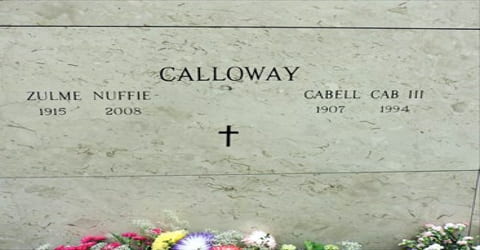
On June 12, 1994, Cab Calloway suffered a severe stroke. He died five months later on November 18, 1994, at age 86. His body was cremated and his ashes were given to his family. Upon the death of his wife Zulme “Nuffie” Calloway on October 13, 2008, his ashes were interred next to her in the Rosewood mausoleum at Ferncliff Cemetery in Hartsdale, New York, U.S.
During his long career, Calloway produced a huge discography. Among the more notable works are 1931’s “Minnie the Moocher,” 1934’s “Moon Glow,” 1939’s “The Jumpin’ Jive,” and 1941’s “Blues in the Night.” These hits established the style of scat and jazz in a way that reverberated throughout the era. His more notable movie credits include “The Big Broadcast” in 1932, “The Singing Kid” in 1936, and “Stormy Weather in 1943. His appearances served to further break down discrimination toward black actors. His “The New Cab Calloway Hepsters Dictionary: The Language of Jive” legitimized the language that surrounded the jazz culture of the time.
Information Source:
